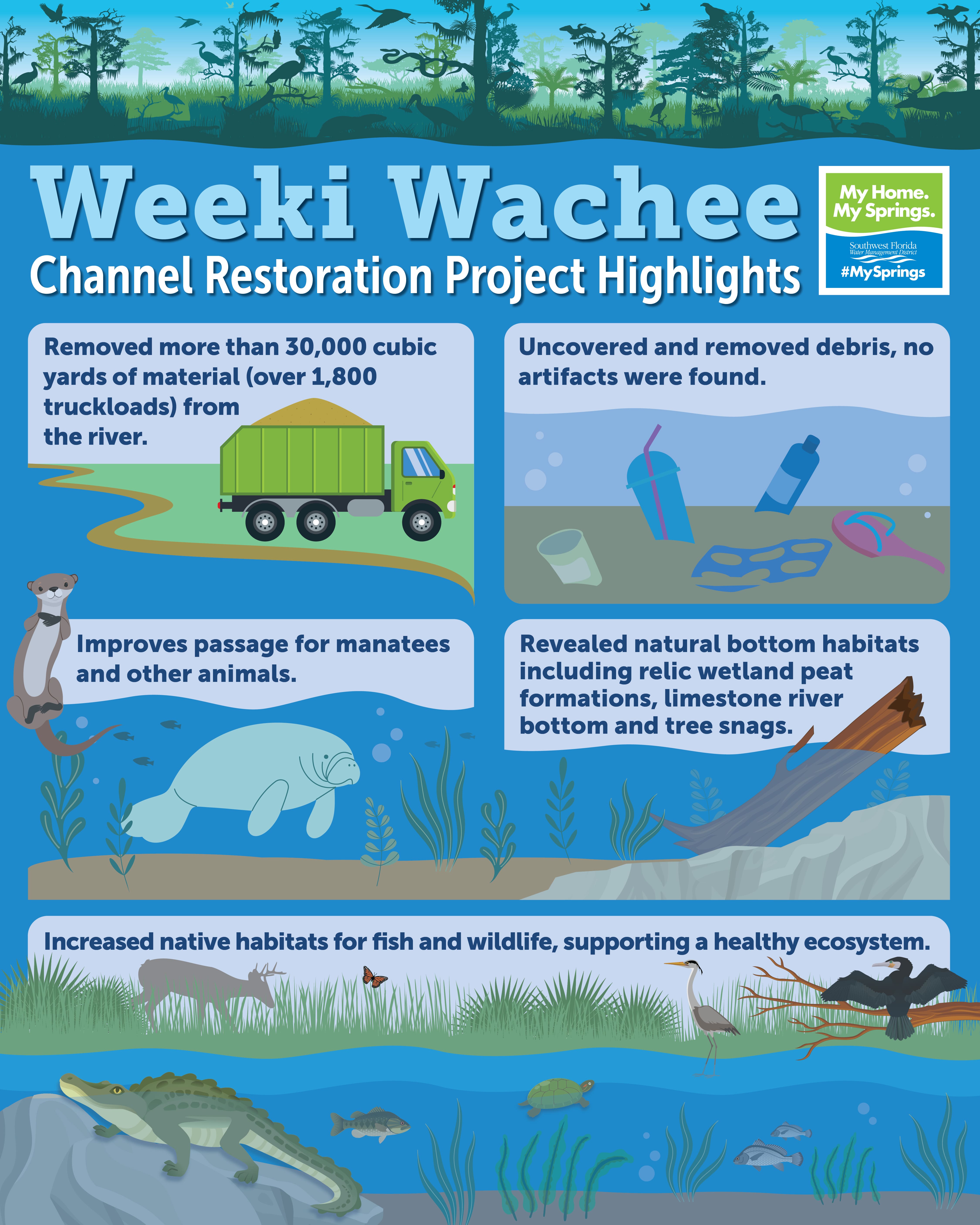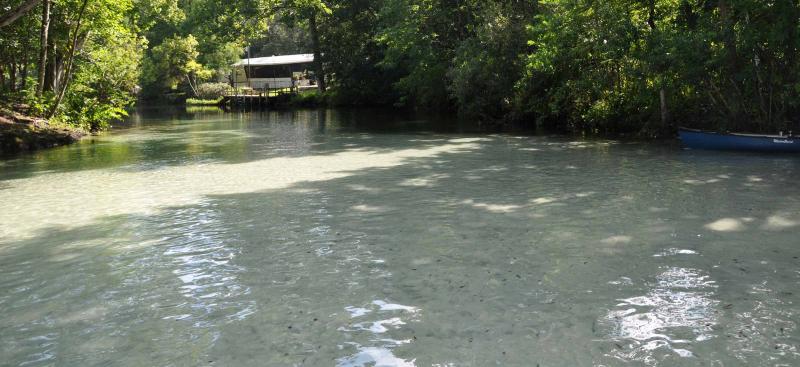Project Overview
It removed accumulated sediments from targeted areas of the river to re-establish historic river depths where these sediments had covered natural habitats. Sedimentation alters the river channel structure, reducing passage for manatees and other animals. It can also smother beneficial submerged aquatic vegetation and other important habitats.
Accumulated sediments were removed using hand-dredging, which includes divers vacuuming sediments using a flexible suction hose. This method ensures that sediments were removed in an environmentally sensitive manner to be protective of the river’s ecosystem and to be less disruptive to visitors on the river.
The dredging is complete. During the course of the project, more than 30,000 cubic yards of material was removed from the river, exceeding the estimated quantity of 26,200 cubic yards. This meets the project goal of allowing passage for manatees and other animals. No artifacts were found. Some debris was uncovered and removed. The project revealed natural bottom habitats including relic wetland peat formations, limestone river bottom and tree snags. These native habitats support a healthy ecosystem by providing habitats for fish and wildlife.

Project completion highlights
Background
Sedimentation is an environmental problem in the Weeki Wachee River and is identified as one of the priority issues in the Weeki Wachee River Surface Water Improvement and Management (SWIM) Plan. Sedimentation alters the river channel structure and can smother beneficial submerged aquatic vegetation and other important habitats. Despite most sources of erosion being addressed in the past, this sediment continues to work its way downstream with widening sand bars and increasingly shallow areas in the lower river as signs of continued sedimentation.
A prior phase of the project evaluated accumulated sediments in the river and identified where removal of sediments would benefit the river's ecosystem. The Southwest Florida Water Management District (District) received funding from the state’s General Appropriations Act for the evaluation, design and permitting of the project, which was completed in late 2019. Additional state funding was requested and approved in the 2020 legislative session for project implementation. The dredging was a multi-year effort beginning March 2022 and ending January 2025.
Project Partners
The project was funded by the State of Florida and the District. The District was the lead agency implementing the project and received input from Hernando County, Florida Fish and Wildlife Conservation Commission and the Florida Department of Environmental Protection.

